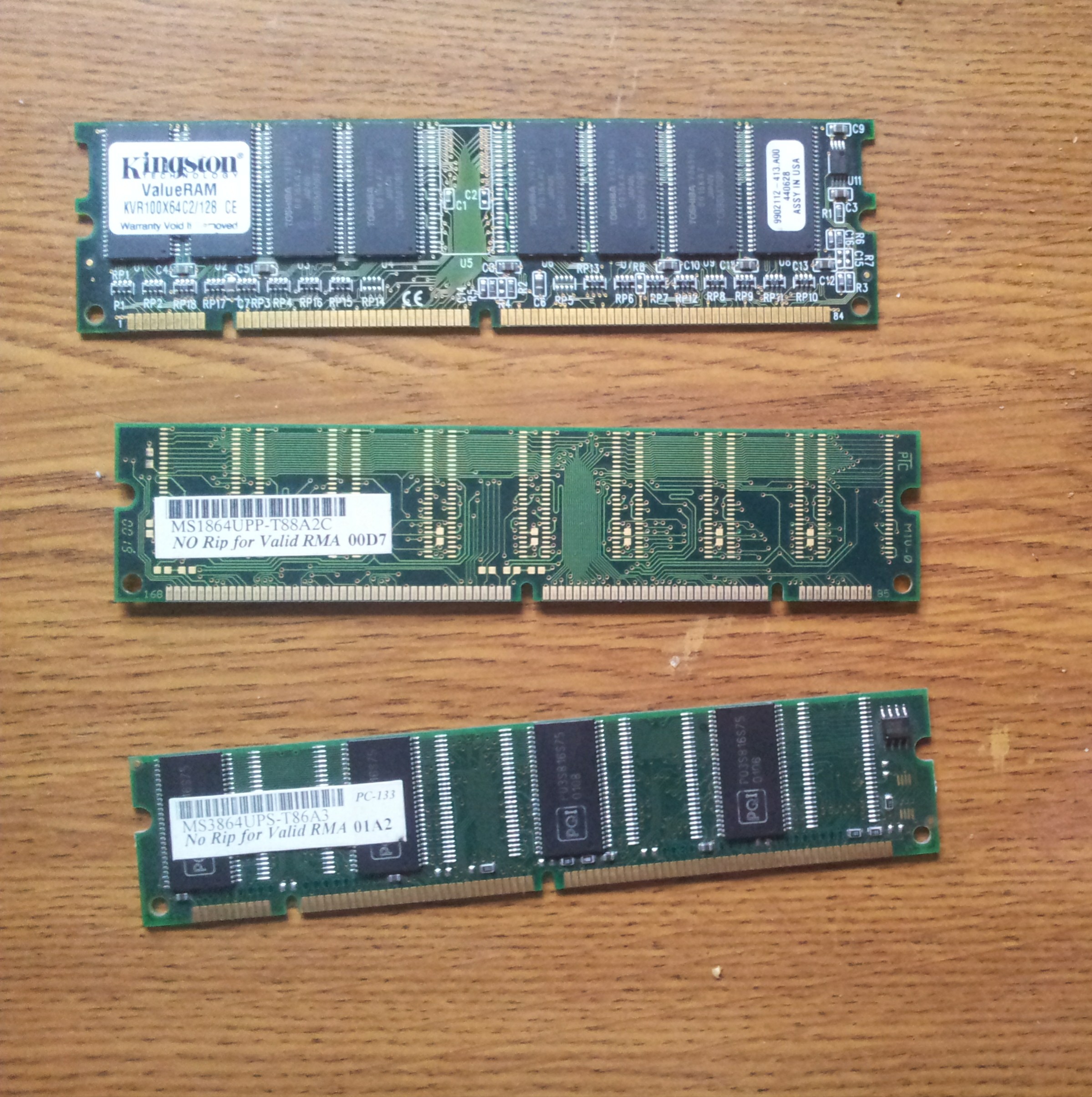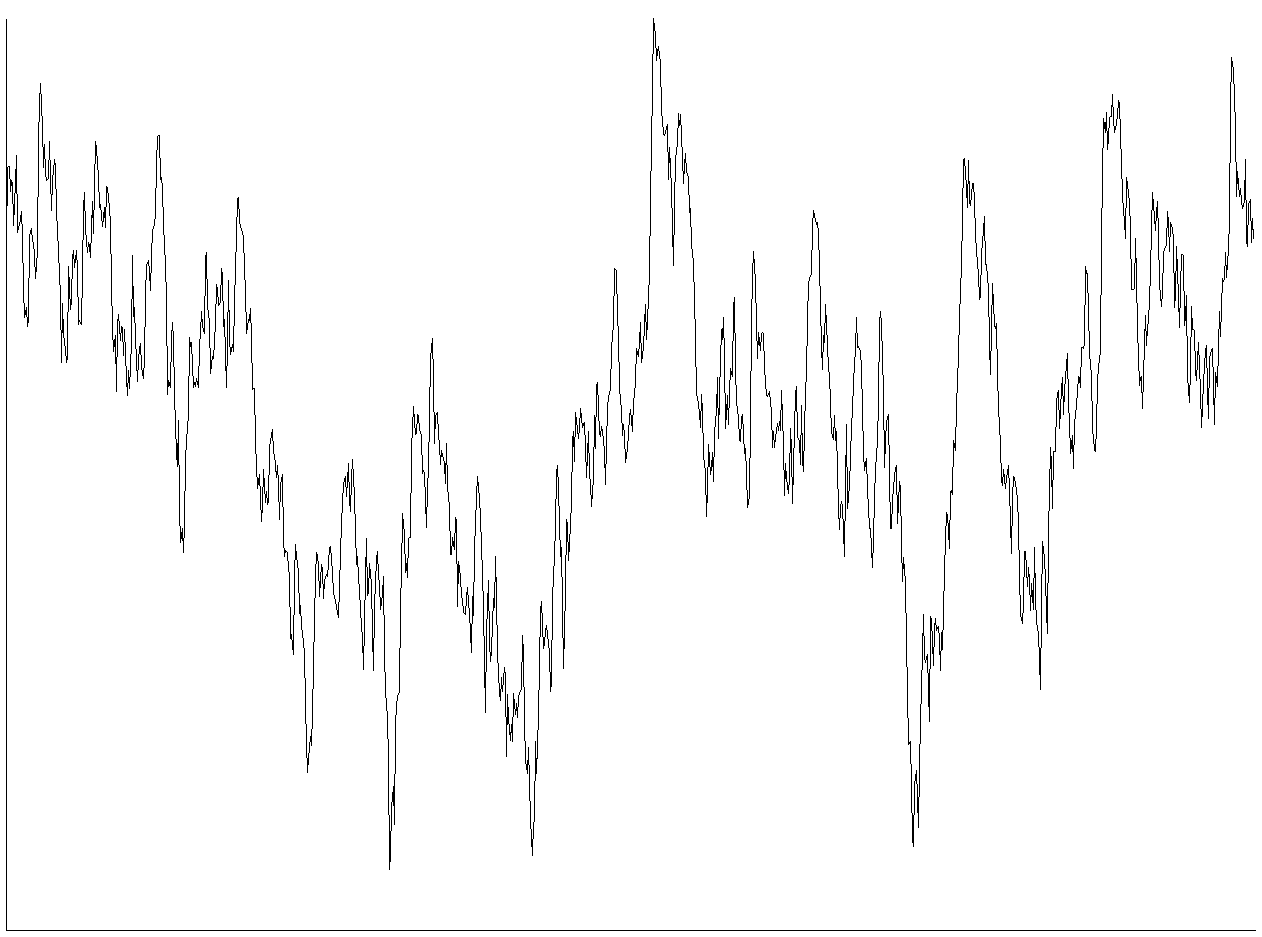|
Rambus In-line Memory Module
Rambus DRAM (RDRAM), and its successors Concurrent Rambus DRAM (CRDRAM) and Direct Rambus DRAM (DRDRAM), are types of synchronous dynamic random-access memory (SDRAM) developed by Rambus from the 1990s through to the early 2000s. The third-generation of Rambus DRAM, DRDRAM was replaced by XDR DRAM. Rambus DRAM was developed for high-bandwidth applications and was positioned by Rambus as replacement for various types of contemporary memories, such as SDRAM. RDRAM is a serial memory bus. DRDRAM was initially expected to become the standard in PC memory, especially after Intel agreed to license the Rambus technology for use with its future chipsets. Further, DRDRAM was expected to become a standard for graphics memory. However, RDRAM got embroiled in a standards war with an alternative technology—DDR SDRAM—and quickly lost out on grounds of price and, later, performance. By around 2003, DRDRAM was no longer supported in new personal computers. PC main memory The ... [...More Info...] [...Related Items...] OR: [Wikipedia] [Google] [Baidu] |
Synchronous Dynamic Random-access Memory
Synchronous dynamic random-access memory (synchronous dynamic RAM or SDRAM) is any DRAM where the operation of its external pin interface is coordinated by an externally supplied clock signal. DRAM integrated circuits (ICs) produced from the early 1970s to the early 1990s used an ''asynchronous'' interface, in which input control signals have a direct effect on internal functions delayed only by the trip across its semiconductor pathways. SDRAM has a ''synchronous'' interface, whereby changes on control inputs are recognised after a rising edge of its clock input. In SDRAM families standardized by JEDEC, the clock signal controls the stepping of an internal finite-state machine that responds to incoming commands. These commands can be pipelined to improve performance, with previously started operations completing while new commands are received. The memory is divided into several equally sized but independent sections called ''banks'', allowing the device to operate on a memor ... [...More Info...] [...Related Items...] OR: [Wikipedia] [Google] [Baidu] |
Double Data Rate
In computing, double data rate (DDR) describes a computer bus that transfers data on both the rising and falling edges of the clock signal and hence doubles the memory bandwidth by transferring data twice per clock cycle. This is also known as double pumped, dual-pumped, and double transition. The term toggle mode is used in the context of NAND flash memory. Overview The simplest way to design a clocked electronic circuit is to make it perform one transfer per full cycle (rise and fall) of a clock signal. This, however, requires that the clock signal changes twice per transfer, while the data lines change at most once per transfer. When operating at a high bandwidth, signal integrity limitations constrain the clock frequency. By using both edges of the clock, the data signals operate with the same limiting frequency, thereby doubling the data transmission rate. This technique has been used for microprocessor front-side busses, Ultra-3 SCSI, expansion buses ( AGP, PCI ... [...More Info...] [...Related Items...] OR: [Wikipedia] [Google] [Baidu] |
Electronic Noise
In electronics, noise is an unwanted disturbance in an electrical signal. Noise generated by electronic devices varies greatly as it is produced by several different effects. In particular, noise is inherent in physics and central to thermodynamics. Any conductor with electrical resistance will generate thermal noise inherently. The final elimination of thermal noise in electronics can only be achieved cryogenically, and even then quantum noise would remain inherent. Electronic noise is a common component of noise in signal processing. In communication systems, noise is an error or undesired random disturbance of a useful information signal in a communication channel. The noise is a summation of unwanted or disturbing energy from natural and sometimes man-made sources. Noise is, however, typically distinguished from interference, for example in the signal-to-noise ratio (SNR), signal-to-interference ratio (SIR) and signal-to-noise plus interference ratio (SNIR) measures ... [...More Info...] [...Related Items...] OR: [Wikipedia] [Google] [Baidu] |
Hang (computing)
In computing, a hang or freeze occurs when either a process or system ceases to respond to inputs. A typical example is when computer's graphical user interface (such as Microsoft Windows) no longer responds to the user typing on the keyboard or moving the mouse. The term covers a wide range of behaviors in both clients and servers, and is not limited to graphical user interface issues. Hangs have varied causes and symptoms, including software or hardware defects, such as an infinite loop or long-running uninterruptible computation, resource exhaustion ( thrashing), under-performing hardware ( throttling), external events such as a slow computer network, misconfiguration, and compatibility problems. The fundamental reason is typically resource exhaustion: resources necessary for some part of the system to run are not available, due to being in use by other processes or simply insufficient. Often the cause is an interaction of multiple factors, making "hang" a loose umbrella ... [...More Info...] [...Related Items...] OR: [Wikipedia] [Google] [Baidu] |
Microprocessor
A microprocessor is a computer processor (computing), processor for which the data processing logic and control is included on a single integrated circuit (IC), or a small number of ICs. The microprocessor contains the arithmetic, logic, and control circuitry required to perform the functions of a computer's central processing unit (CPU). The IC is capable of interpreting and executing program instructions and performing arithmetic operations. The microprocessor is a multipurpose, Clock signal, clock-driven, Processor register, register-based, digital integrated circuit that accepts binary code, binary data as input, processes it according to instruction (computing), instructions stored in its computer memory, memory, and provides results (also in binary form) as output. Microprocessors contain both combinational logic and sequential logic, sequential digital logic, and operate on numbers and symbols represented in the binary number system. The integration of a whole CPU on ... [...More Info...] [...Related Items...] OR: [Wikipedia] [Google] [Baidu] |
Intel 440BX
The Intel 440BX (codenamed Seattle) is a chipset from Intel, supporting Pentium II, Pentium III, and Celeron processors. It is also known as the i440BX and was released in April 1998. The official part number is 82443BX. Features The 440BX originally supported Slot 1 and later Socket 370 Intel P6-based processors in single and SMP configurations at speeds of up to 1 GHz (and potentially up to 1.4 GHz with certain unsupported modifications, up to 1.7 GHz can be achieved using Front Side Bus speeds higher than 133 MHz and appropriate cooling). Its southbridge counterpart is the PIIX4E. History The Intel 440BX is the third Pentium II chipset released by Intel, succeeding the 440FX and 440LX. With the new 100 MHz front side bus, Pentium II CPUs were able to scale better in performance by reducing the difference between processor clock and bus speed. The previous 66 MHz bus had become a serious bottleneck and dated back to the first Pentium "Clas ... [...More Info...] [...Related Items...] OR: [Wikipedia] [Google] [Baidu] |
Intel 850
The Intel 850 chipset was the first chipset available for the Pentium 4 processor, and was simultaneously released in November 2000. It consists of an 82850 memory controller hub and an 82801BA I/O controller hub. This chipset outperforms the AMD 760 chipset with the 266 MHz FSB. Despite using (supposedly) high-performance expensive RDRAM, performance was mediocre at best. In early 2002, this chipset was superseded by the Intel 845, which used slower but much less expensive SDRAM or DDR SDRAM. The Intel 855 chipset released at the same time as the Pentium M and Celeron M, and the lower Intel 852 chipset are completely different products and are not covered in this article. Features *Socket 423 or Socket 478 CPU compatible with 400 MHz FSB *Supports P4 CPUs at 1.3 GHz or Faster *Four PC800 RDRAM slots compatible with Dynamic random access memory#Errors and error correction, ECC *Up to 2 GB memory supported. *AGP 4X slot Intel 850E The Intel 850E chipset added PC10 ... [...More Info...] [...Related Items...] OR: [Wikipedia] [Google] [Baidu] |




